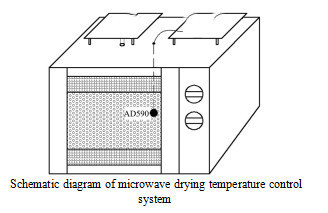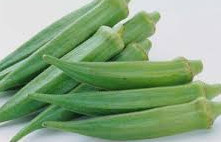Effects of drying methods on the contents of reducing and oxidizing VC in Okra
ABSTRACT: The effects of hot air drying, microwave drying equipment and vacuum drying on the contents of reducing and oxidizing VC in okra were studied. The results showed that the contents of reduced and oxidized VC in okra were significantly affected by the three methods.

In vacuum drying, the storage rate of reduced VC is the highest, 93.62%, followed by microwave drying, 78.05%, and hot air drying, the lowest, 59.73%; but the storage rate of oxidized VC is the highest, 120.91%, followed by microwave drying, 111.39%. On the contrary, the storage rate of oxidized VC in vacuum drying is the lowest, 108.52%. This shows that vacuum drying can isolate oxygen, thus inhibiting the oxidation of VC, while hot air drying can make part of the reduced VC contact with oxygen and be oxidized to oxidized VC.
Key words: okra microwave drying; vacuum drying; hot air drying; reduced VC; oxidized VC; preservation rate

VC is one of the most important vitamins for the healthy growth of human body. It mainly includes reduced VC (and oxidized VC. The natural VC is reduced VC. VC is very active and easily damaged by light, oxygen, heat and other factors. Reduced VC can easily be oxidized to remove two H atoms and form oxidized VC. It is precisely because of its easily oxidized nature that formed very strong reducibility of VC. The stability of oxidized VC is worse than that of reduced VC. It is easy to hydrolyze lactone cycles to form non-biologically active diketogloxylic acid.
There are many studies on VC at home and abroad, but most of them are limited to reducing VC, and the research on oxidizing VC is relatively rare. Okra, also known as Capsella chinensis, Capsella chinensis, okra and so on, is a nutritious vegetable. In particular, every part of okra contains cellulose, hemicellulose and lignin. Its tender fruit is rich in free amino acids, protein, VA, VC, VE, zinc, potassium, calcium, phosphorus, iron and other mineral elements, as well as viscous substances composed of pectin and polysaccharide. The research on okra includes the research on polysaccharide, pectin and flavonoid glycosides of okra, but the research on okra V has not been reported.
Drying is the most commonly used heat treatment method in the process of vegetable processing. It can prolong the shelf life of vegetable by drying. Hot air drying is the most commonly used method, but Vc will oxidize with the increase of drying temperature and drying time, thus reducing the nutritional value of vegetables. The effects of different drying methods on the preservation rate of Vc are also quite different.
On the basis of previous studies, this experiment aims to explore the effects of different drying methods on the VC content of okra. To provide technical parameters and basis for improving the processing technology of okra and preserving its Vc content.